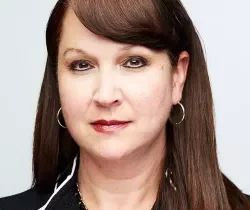Rachel Wimberly

Rachel Wimberly is Executive Vice President of Business Development at Tarsus Group, US. Follow her on Twitter @TSNN_Rachel.

Something must be in the air because in the past week or so I have received an inordinate amount of email messages that say something like, ‘Oops, please disregard our earlier message’ or ‘Oops, we told you about this great new product but forgot to tell you the name of it’.
I also have seen a ton of emails come through (as either actual messages or with attached press releases) with spelling, grammar and sentence structure errors.
Believe me, in NO way am I pointing fingers, because I am far from perfect. I often have written an email lickety-split and hit the ‘send’ button in lightning speed to find out I misspelled something (like a person’s name!) or accidentally misspelled a word to something my Grandmother would wash my mouth out with soap for saying.
The point is, in this world of email communication, it’s important for all of us to take a little bit of time and make sure the message we are communicating is the one we really want to.
Here are some basic rules I try and follow:
1. This one seems simple, but I always read an email back out loud that’s really important. Writing emails tends to come with a more ‘casual’ sentence structure and grammar at times and I often catch something that could be taken out of context or just plain old sounds bad.
2. I never, ever trust spellcheck. We ALL have fallen victim to bad spellcheck or autocorrects. I don’t just hit spellcheck and then send an email off; in fact, I try not to use it at all. It’s a crutch and unless I really don’t know how a word is spelled (like Millennial, which trips me up every time) I use it ONLY after I have scoured the email several times myself first.
3. Watch out for subject lines. I have written perfect emails before that said everything I wanted to in a really professional, succinct manner only to send them off to sometimes an entire GROUP of people who I am hoping to impress to only realize I misspelled something in the SUBJECT line. Ugh … is all I can say about that.
4. Unless you are BFF’s with someone in the business (I mean actual BBF’s – not the air-kissing-cheek kind) – don’t be too cutesy, casual in your emails. What I mean is, maybe consider not starting an email with, ‘Hey girl, I’ve got some news for you!’ or something like that.
5. Attachments aren’t really necessary for press releases. Lots of times, it’s much better if I get a press release right in an email with a short note up top from whomever is sending it. If you are attaching something, don’t make it a HUGE PDF or image file. Our server typically lets them through, but most servers won’t. Especially big company ones that don’t want bulky items jamming things up.
6. READ press releases through and through before sending for content. I get a ton of them with glaring mistakes, misspellings, poor grammar and wonky sentence structure. I, by no means at ALL, am perfect every article I write, but I am well aware that having a lot of errors reflects negatively.
7. One more thing on press releases: I don’t consider a ‘press release’ someone sending me an email with a short intro about their ‘news’ and one quote. I usually need more than that to figure out whether we can use it or not.
I hope I don’t sound like an email scrooge. That’s not my intention at all. This actually is a reminder for even myself to take a minute before I hit ‘send’ on that next email and make sure it doesn’t cause a kerfuffle with someone (take that spellcheck!).

Add new comment